Comparative neonatal outcomes in singleton births from blastocyst transfers or cleavage-stage embryo transfers: a systematic review and meta-analysis
- PMID: 28472983
- PMCID: PMC5418763
- DOI: 10.1186/s12958-017-0255-4
Comparative neonatal outcomes in singleton births from blastocyst transfers or cleavage-stage embryo transfers: a systematic review and meta-analysis
Abstract
Background: Comparative neonatal outcomes with respect to singleton births from blastocyst transfers or cleavage-state embryo transfers are controversial with respect to which method is superior. Many studies have yielded contradictory results. We performed a systematic review and meta-analysis for the purpose of comparing neonatal outcomes in single births following IVF/ICSI.
Methods: We searched the Medline, Embase and Cochrane Central Register of Clinical Trials (CCTR) databases until October 2016. Studies and trials that contained neonatal outcomes for singleton births were included. Data were extracted in 2 × 2 tables. The analysis was performed using Rev Man 5.1 software. Risk ratios (RRs) and risk differences, with 95% confidence intervals, were calculated to assess the results of each outcome. Subgroups were applied in all outcomes. Newcastle-Ottawa scale (NOS) checklists were used to assess the quality of the referenced studies.
Results: Twelve studies met the criteria in this meta-analysis. There was a high risk of preterm birth after blastocyst embryo transfer versus the risk after cleavage-stage transfer (RR: 1.11, 95% CI: 1.01-1.22). For the "only fresh" subgroup, the outcome was coincident (RR: 1.16, 95% CI: 1.06-1.27). For the "fresh and frozen" and "only frozen" subgroups, there were no differences. Patients who received fresh blastocyst embryo transfers had a high risk of very preterm births (RR: 1.16, 95% CI: 1.02-1.31). Finally, cleavage-stage embryo transfers were associated with a high risk of infants who were small for gestational age (0.83, 95% CI: 0.76-0.92) and a low risk of those who were large for gestation age (1.14, 95% CI: 1.04-1.25).
Conclusions: The risks of preterm and very preterm births increased after fresh blastocyst transfers versus the risks after fresh cleavage-stage embryo transfers. However, in frozen embryo transfers, there were no differences. Blastocyst embryo transfers resulted in high risks of infants who were large for gestational age, and cleavage-stage embryo transfers resulted in high risks of infants who were small for gestational age.
Keywords: Blastocyst embryo transfer; Cleavage-stage embryo transfer; Perinatal outcomes.
Figures

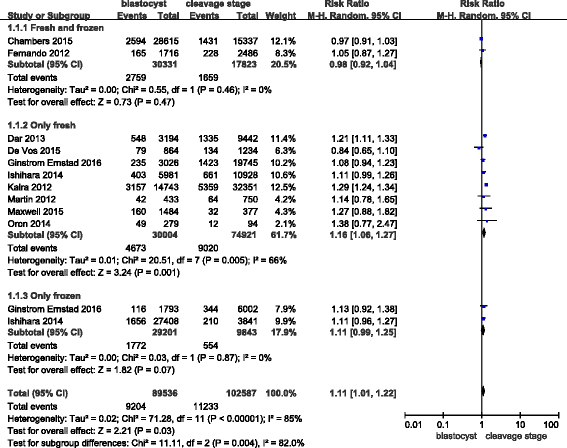
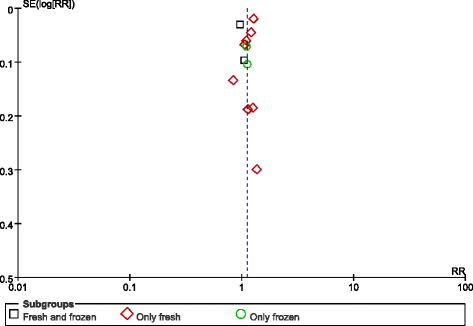
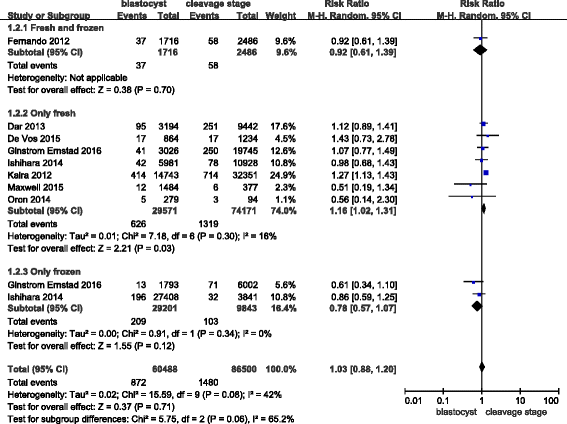

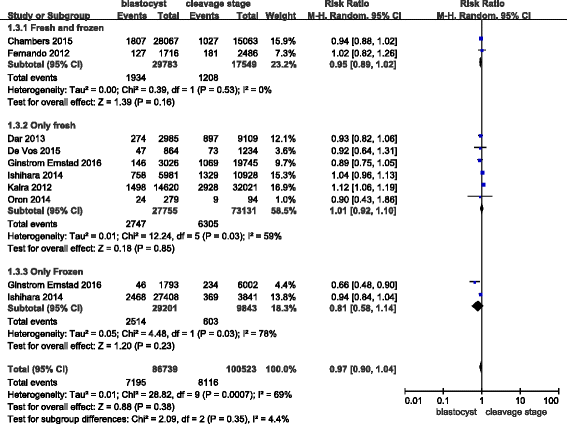

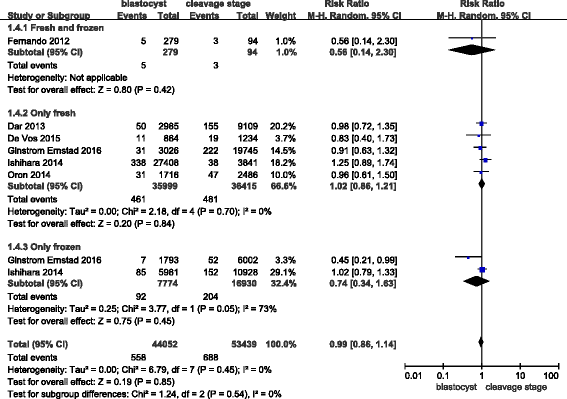
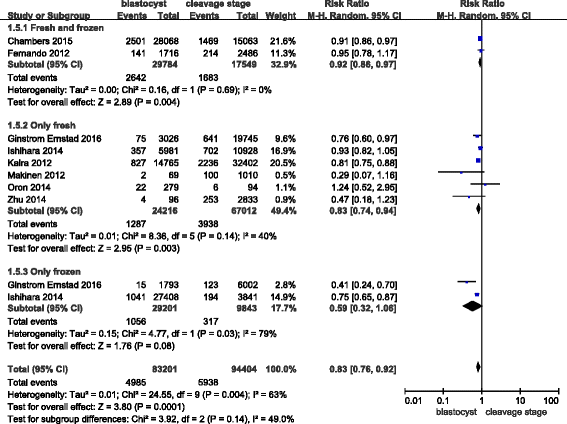
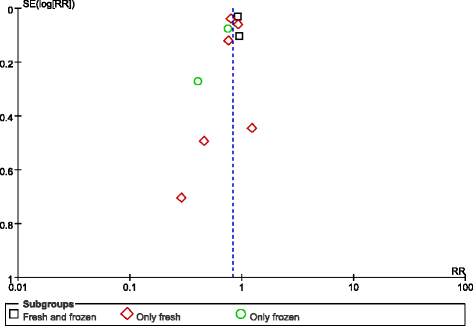

References
-
- Dyer S, Chambers GM, de Mouzon J, Nygren KG, Zegers-Hochschild F, Mansour R, Ishihara O, Banker M, Adamson GD. International Committee for Monitoring Assisted Reproductive Technologies world report: Assisted Reproductive Technology 2008, 2009 and 2010. Hum Reprod. 2016;31:1588–1609. doi: 10.1093/humrep/dew082. - DOI - PubMed
-
- Maheshwari A, Kalampokas T, Davidson J, Bhattacharya S. Obstetric and perinatal outcomes in singleton pregnancies resulting from the transfer of blastocyst-stage versus cleavage-stage embryos generated through in vitro fertilization treatment: a systematic review and meta-analysis. Fertil Steril. 2013;100:1615-1621.e1611-1610. doi: 10.1016/j.fertnstert.2013.08.044. - DOI - PubMed
Publication types
MeSH terms
LinkOut - more resources
Full Text Sources
Other Literature Sources
Miscellaneous

